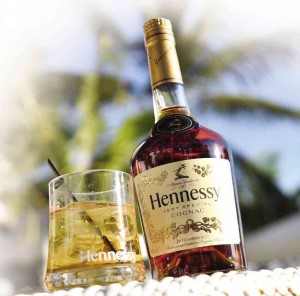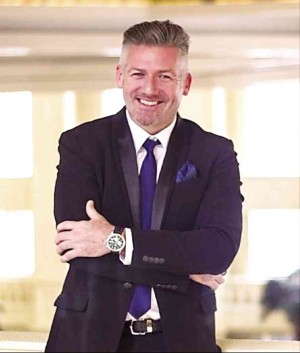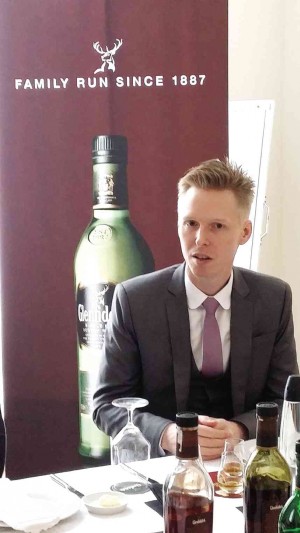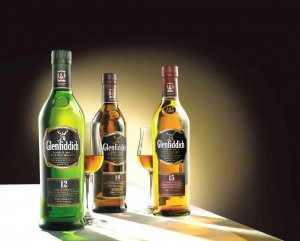World’s top liquor makers seek Filipino love affair
OVER the last decade, the number of Filipino billionaires according to Forbes Magazine has more than tripled—a statistic that, while shocking for a poor country like the Philippines, points to the nation’s recent rise in prominence.
And some of the world’s leading liquor manufacturers, which produce obscenely priced bottles of alcohol (they admit), have taken notice.
“Liquor companies are excited about prospects in the Philippines,” says Steven Bullock, managing director of LVMH Moët Hennessy Philippines.
“Obviously the vast majority are not in a position to drink our products, but… there are many individuals who are historically proven to enjoy our wines and spirits,” Bullock tells the Inquirer.
The first bottle of Hennessy, according the Bullock, entered the Philippines in 1903.
Article continues after this advertisementThe local market has several things going for it, he says. There’s no enforced drinking age, and more of the country’s 100 million people are earning more money.
Article continues after this advertisementBeijing’s recent crackdown on gambling in Macau is also expected to push high-rollers from the mainland to the Philippines, where casinos’ doors are open 24/7 to anyone with cash to spare.

RECENT shifts in economic fortunes prompt Hennessy to look more closely at prospects in the Philippines.
Moët Hennessy’s liquor catalog includes Hennessy cognac, and different champagnes such as Moët & Chandon and Dom Pérignon—all popular brands at poker
tables.
Recent shifts have also prompted Europe’s top liquor exporters to look toward Southeast Asia. Economic prospects in Europe, where people get drunk more than any other part of the world, continue to be dim. A 2014 report by the World Health Organization showed alcohol consumption in Europe fell 10 percent from 2008 to 2010.
Many European policymakers have become more health conscious, pushing for higher legal drinking ages on the continent.
Asia-Pacific now accounts for a third of Hennessy Moet’s global sales, with the lion’s share going to China. Up until last year, China was the biggest prospect for all luxury brands, not just of liquor but of everything—from cars and watches, to bags, shoes and clothes.
But Beijing’s recent policy aimed at slowing China’s economy to prevent it from overheating have forced companies to rethink their strategies.
And for the liquor makers, what makes the Philippines attractive is that Filipinos, rich or poor, love to drink.
Bullock says the Philippines ranks among the world’s top 10 liquor consumers per capita, owing largely to the popularity of cheap local brands.
“You only have to walk into large supermarket chains, and you look at the size of the liquor category. Local rums, brandy… it’s an enormous liquor category,” he says.
In setting up a subsidiary in the Philippines, Hennessy hopes to persuade more Filipinos to drink cognac for life, Bullock explains.
“Ideally, a consumer that starts an affair with Hennesy at 25 continues that love affair for the next 45 years,” he says.
Drinkers of supermarket liquor and premium brands may not be the same people, Hennessy and other liquor companies admit. Hence, the payoff comes later in life.
“Obviously, single malt whisky is not the most affordable product,” says Matthew Ferguson-Stewart, Glenfiddich regional ambassador for Southeast Asia.
Glenfiddich is the world’s best-selling single malt scotch. The company hopes to pull it off in the Philippines—a market dominated by blended brands (read: lesser quality).
Stewart says that not only can more Filipinos afford more expensive liquor, but tastes are also getting more refined. People with more discerning palates (your reporter not included) may detect hints of apple pie, cinnamon or vanilla in their shots of Glenfiddich—served “neat” of course.
“Filipinos like quality stuff, and they focus on detail as well,” Stewart said.
Those who may know their liquor will do well to remember the following: Dom Pérignon and Moët & Chandon are types of champagne, which is what you call sparkling wine made in Champagne, France; Hennessy is cognac, which is brandy or distilled wine from the French region of Cognac; whisky is made of grains like barley and corn, and scotch is whisky from Scotland.
Last year was the first time in history that exports dipped for the global whisky industry, Stewart says. But Glenfiddich, which ships the most bottles of whisky’s finest single malt, expects to grow exports by 50 percent in 2015 due to demand from countries like the Philippines.
Growing tourism has also expanded the market for expensive liquor in the Philippines, with bottles being emptied eagerly at the country’s top resorts in Palawan, Boracay, Cebu and the like.
Last year, a record five million tourists came to the Philippines, testament to the success of the country’s “Its More Fun in the Philippines” campaign.
In Metro Manila, the growing number of bars and nightclubs filled with old money and the nouveau riche also fuels demand for spirits of all ranges, Bullock says, emphasizing the company’s focus on the top end of the social strata.
The consumer enjoying Emperador, the world’s second-best-selling brandy by volume, may not be the same person enjoying a bottle of Hennessy in Valkyrie (a new local nightclub), he adds.
Strong demand for premium liquor has not escaped the attention of local players. Last year, Emperador, owned by Andrew Tan’s conglomerate Alliance Global Inc., bought scotch whisky maker Whyte & Mackay for close to $730 million.
Emperador’s purchase shows that the Philippines’ growing fondness for expensive alcohol is a two-way affair.


